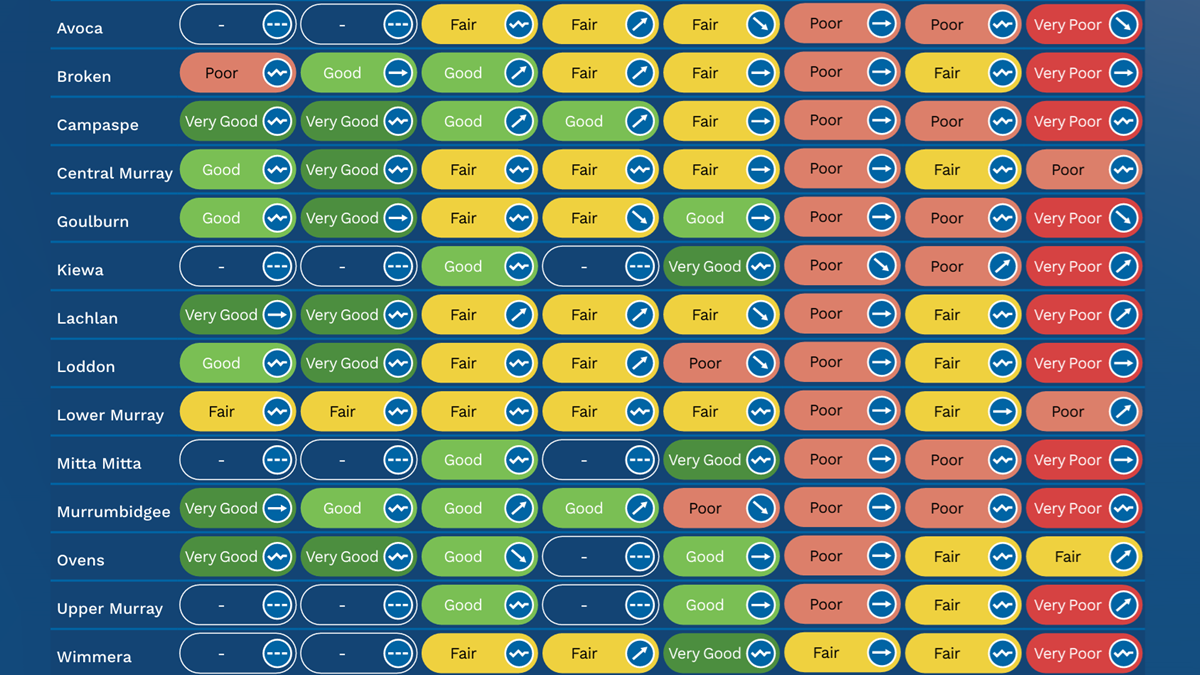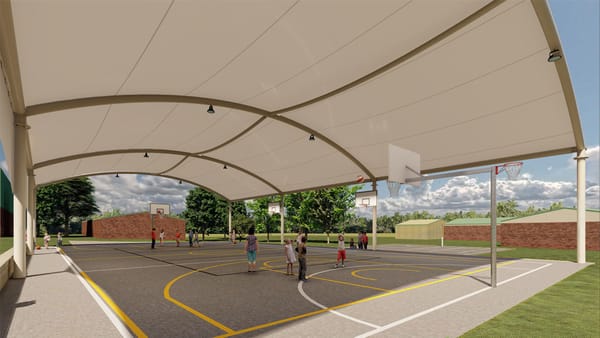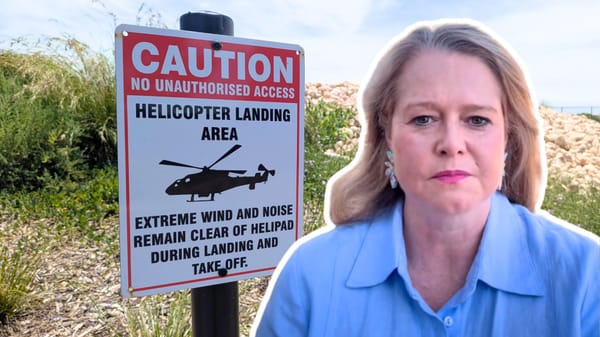Murray-Darling Basin Plan is helping our river, but more needs to be done
Delegates have gathered at an event in Murray Bridge, River Reflections, ahead of a major review of the national water agreement.

This story is now free to read. Help Murray Bridge News tell more stories like this by subscribing today.
A decade ago, governments around Australia’s biggest river system agreed that too much water was being taken out of it, and something needed to be done.
The agreement they made – the Murray-Darling Basin Plan – was meant to be a compromise.
Sure enough, it was demonised in some corners for crippling agriculture, and in others for failing to save the environment.
Now the plan is up for review.
But negotiations are likely to be a bit less contentious this time around, judging by the attitudes of more than 300 delegates at a conference in Murray Bridge last week.
Murray Bridge News sat in on two days of presentations at River Reflections 2025, travelled to the Goolwa barrages and Murray Mouth, and chatted with delegates from across the nation to get a sense for how the river system is going, what big problems remain and what it will all mean for Murraylands communities.
We’re better off under the basin plan, but it’s not perfect
The vibe at the conference was that people up and down the river are broadly on the same page.
As one delegate said during a Q and A session: “Most people are reasonable and love their environment.”
The Murray-Darling Basin Authority, tasked with managing the river system, gave itself some generally positive report cards in the days leading up to the summit.
About 20 per cent of the water which flowed into the basin – almost 2070 gigalitres per year – was now being set aside for the environment as a result of more than $10.6 billion in taxpayer spending.
That water had stabilised native bird populations and vegetation, restored wetlands, and improved the condition of the rivers to the benefit of all who lived along them.

But the plan’s impact had been uneven, MDBA chair Daryl Quinlivan AO said.
“The basin plan has helped arrest the decline in the health of the basin in some respects, but many expected much more of the plan,” he said.
“Where we’ve delivered environmental water to ecosystems, they’ve generally done well, but this may not be enough … particularly under a changing climate.”
Poor water quality, the failure of native fish populations and growing demand for water remained problems, he said.
“All this points to a plan that has done much good, but also a plan that is ready to be updated.”

Federal Water Minister Murray Watt echoed those points in a pre-recorded video message.
“We’re making real headway, but repairing decades of decline doesn’t happen overnight,” he said.
Let’s take a look at some of the issues which remain.
Water savings are getting harder to make
Water recovery – the process of buying or creating water entitlements for the environment – has slowed significantly since 2019-20, according to the MDBA.
Efforts to find 605GL worth of efficiencies in the northern basin are likely to fall up to 300GL short.
Efforts to secure 450GL of extra water for the environment – on top of the basin plan’s core target – are well behind schedule, too, with just over 150GL recovered or contracted so far.

Still, visiting Harvard business professor Forest Reinhardt applauded the system of water allocation and trading which existed in Australia.
It was the best way to deal with a scarce resource, he suggested, and the envy of the rest of the world.
But water for the environment would always have to be taken from somewhere, and he didn’t think anyone in the world had solved the problem of how best to support communities where irrigators had chosen to sell their entitlements and close down.
His advice was to continue removing restrictions on water trading: “The more you can make water rights like normal property rights, the more effective the system will be.”

Our climate is changing
Temperatures across the Murray-Darling Basin have risen by 1.4 degrees over the past century, with most of that increase having come since 1970, according to the MDBA.
Flows of water into the River Murray have gone down by an average of 11% since the Millennium Drought.
Weather systems that would previously have travelled in a straight line from Western Australia over South Australia’s agricultural regions were now turning south and dropping rain into the ocean instead.
“Each season is teaching us new lessons and exposing new vulnerabilities,” said National Emergency Management Agency coordinator-general Brendan Moon AM.
But the climate is becoming more variable, too.
Almost all of the past 15 years have been either very dry or very wet, not somewhere in between.

That pattern was likely to continue, risk consultant Matthew Coulton said.
“We’ll continue to have really dry events, we’ll continue to have big wet events,” he said.
“Our resilience and our preparedness will come down to our ability to anticipate and have plans in place.”
Instead of fretting, though, he suggested decision-makers at all levels focus on “no-regrets” options that would be worth pursuing no matter what.
For example, using water more efficiently was a good idea regardless of whether it was a wet year or a dry year.

The demographics of the basin are changing, too
The Murray-Darling Basin’s total economic output is up by 5.7% per year since the plan came in – that’s better than the rest of regional Australia.
The region’s population is growing, too – about 300,000 extra people are projected to be born or move into the region by 2035, according to demographer Hari Hara Priya Kannan.
But most population growth is happening in bigger towns, like Murray Bridge, while the population of more remote areas is falling.
Combine that with an ageing population, and finding workers is likely to become an even bigger problem than it already is for basin employers.

More still needs to be done for the environment
Environmental improvements had been recorded, but there was more that could be done, the MDBA noted.
Notably, in a recent audit, the Lower Murray was one of just two catchment areas across the basin which failed to achieve a rating better than “fair” for any of the MDBA’s indicators of environmental health.
Native fish populations were still not in a good way outside the Coorong and Lower Lakes, and had suffered die-offs in the Darling; but carp had multiplied since the 2022-23 floods.
Water flows out of the Goolwa barrage. Video: Peri Strathearn.
Meningie fisherman Glen Hill suggested the system could be managed better.
More of the environmental water intended for the Coorong would get to where it was meant to go if it were released through the barrages at suitable times, and under suitable weather conditions.
Targeting mid-size carp would have an outsized impact on the pest species’ overall population, too, he suggested.
Indigenous Australians deserve a seat at the table
A major focus for the MDBA at the moment is making sure the basin’s traditional owners have a say in how environmental water is used.
After all, Indigenous Australians had managed the basin and its native species for millenia.
Better environmental outcomes had been achieved through projects in which water managers and First Nations people had worked together, the MDBA said.
But there was more that could be done to encourage participation and support communities’ interests.



Attendees share their perspectives at the conference. Photos: Peri Strathearn.
Communities upstream still feel hard done by
While the state-versus-state feuding has faded a bit in recent years, there is every chance it will roar back to life as the basin plan review progresses over the next year.
Upstream of Wentworth, where the Darling joins the Murray, flows are more seasonal and rivers are more likely to run dry during the summer.
The MDBA noted that communities up there wanted:
- Rivers to remain connected to each other more often
- Stronger guarantees around drinking water supply
- Better water quality
- The Menindee Lakes to be better managed

What can be done about these issues?
“We are at a critical time in our implementation of the basin plan,” MDBA chief executive Andrew McConville said in a statement.
“It’s clear from the results that the basin plan is working, but there is more to be done.
“What we do next will determine the long-term health of the basin.”
The next steps for the basin will be:
- Late 2025: An outlook issued by the MDBA will share researchers’ projections into the future of the basin
- Early 2026: A discussion paper will explore the issues facing the basin plan in more detail; a round of public consultation will follow
- Late 2026: A final review of the plan will be published, and will recommend actions governments can take
Input from members of the public, including people who live and work here in the Murraylands, will play a critical role in shaping what governments do in the years to come.

“The review is not about starting over, it’s about building on what we’ve got, making it better and getting the best outcomes we can,” Mr McConville said.
“It’s our opportunity to work smarter and with communities, using the best available evidence to ensure the basin plan can deliver for the environment, communities and industries into the future.”
The MDBA thanked the local committee members who had helped organise the conference, held at the Bridges Event Centre: Ben Fee, Wayne Thorley, Bill Wilson, Amy Lee and Tammy O’Malley.
- More information: For the review of progress made under the basin plan so far, visit www.mdba.gov.au. For the sustainable rivers audit, visit www.mdba.gov.au. For a look ahead to the basin plan review, visit www.mdba.gov.au.
- Read more: Where to from here for the Murray-Darling Basin Plan? Five experts weigh in





